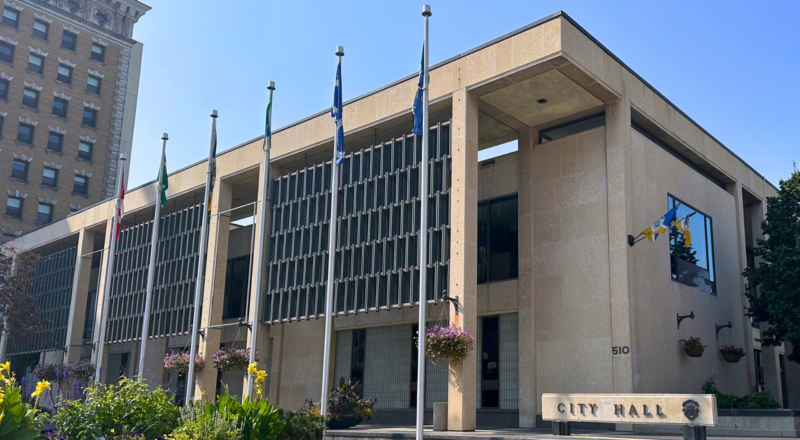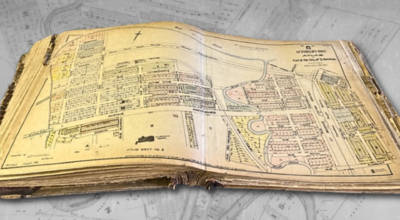
/ News
February 20, 2025
Two New Heritage Designations!
On February 19th, 2025, the City of Winnipeg Standing Policy Committee on Property and Development concurred with the recommendation of the Historical Buildings and Resources Committee and approved the addition of two structures to the City of Winnipeg’s List of Historical Resources. This municipal heritage designation will now protect the Centennial Fountain at 311 Broadway and the Midland Railway Building (Freight House) at 200 Isabel Street from demolition or alteration of their character-defining elements. Both structures are owned by the City of Winnipeg, which unequivocally agreed to the designations. Heritage Winnipeg is pleased to see the City of Winnipeg being a good steward of these historic structures and taking proactive measures to protect our built heritage for future generations.
The Centennial Fountain was officially opened in October 22nd, 1970. Located on the median of Broadway just west of the intersection with Donald Street, it celebrated Manitoba’s centennial and the Shoal Lake Aqueduct’s 50th anniversary. Relatively unchanged in the past 55 years, the modernist fountain was designed in the International Style by Brian Bancroft. Made of concrete with the course aggregate exposed above the foundation, it was a geometric design with two levels of flowing water. The square pool at the top of the structure was intended to create large enough reflections for vehicle passengers on Broadway to enjoy, while the seats built into the walls at the bottom of the structure encouraged pedestrian traffic to sit and stay awhile. The $25,000 project was funded by the Metropolitan Corporation of Greater Winnipeg and the Metropolitan Estate and Property Corporation Ltd., a British development company that was opening two new buildings near the fountain (Centennial House at 310 Broadway and Chateau 100 at 72 Donald Street) the same year.
By the end of the first decade of the 21st century, the Centennial Fountain had not been functional for many years. The City of Winnipeg undertook a rehabilitation project which returned the fountain’s functionality while updating it to include the Indigenous history of Winnipeg’s water source. Working with Shoal Lake 40 First Nation, a large copper plaque was set in a semicircle of eight smaller interpretive panels at the west end of the fountain. The new installation tells the story of Shoal Lake 40, the Indigenous community at the heart of the city’s fresh water source that was forever impacted by the opening of the aqueduct. The updated fountain was unveiled on June 9th, 2023.
The Midland Railway Building opened in 1911 as the office, warehouse and freight yard of the Midland Railway Company of Manitoba when Winnipeg was the railway hub of Western Canada. Designed by Samuel L. Bartlett in a classically inspired style seen in railway stations throughout Western Canada, the long one storey warehouse area stretched out behind the two storey office section at the front. The dark brick facade of the office section featured ornamental brickwork while the warehouse section had large doorways and windows for movement of materials, light and fresh air; with a wide canopy running along the south side. The warehouse was expanded the same year the building opened.
In the 1970s the Midland Railway Company of Manitoba abandoned their building, which was taken over by the City of Winnipeg. With the help of students from R.B. Russell and Tec Voc schools participating in a work-education program, the Midland Railway Building adaptively reused as a community centre called Freight House. A gymnasium was added in 1991 and in 2014 outdoor recreation facilities were built on the surrounding property. Today the building is divided into six units serving different community needs. Although significant alterations have been made, most of the building’s original materials and details remain; creating a recognizable neighbourhood landmark.












